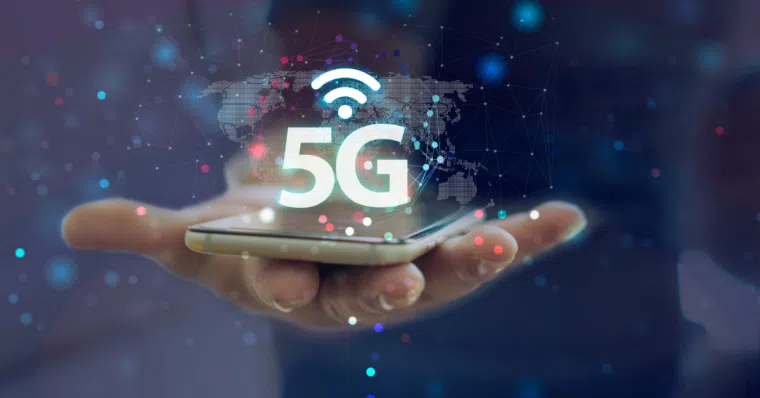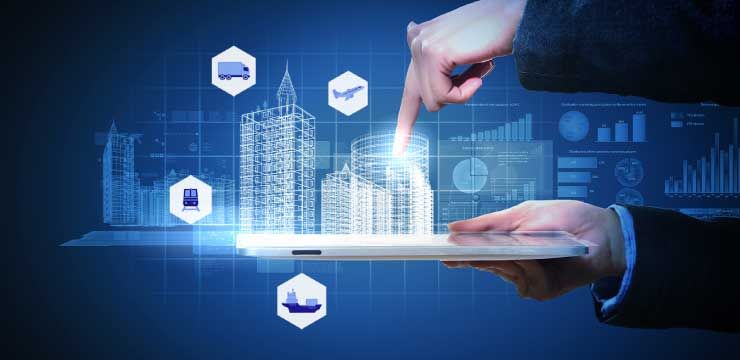How 5G Technology is Revolutionizing the World of Connectivity and Innovation

- How Does 5G Technology Differ From Previous Generations of Wireless Communication?
- How is 5G Technology Driving Innovation in Various Industries, Such as Health Care and Transportation?
- What are Some Potential Challenges or Limitations of Implementing 5G Technology?
- How Can Working Professionals and Technology Enthusiasts Leverage the Possibilities Offered by 5G Technology?
- Accelerate Your Technology Career With Emeritus
The transformative potential of 5G technology, which is poised to redefine wireless communication, has been steadily gaining momentum in the global 5G infrastructure market. According to a report by Grand View Research, the technology’s market size was valued at $9.11 billion in 2022 and is expected to witness a compound annual growth rate of 28.4% from 2023 to 2030. Moreover, despite the initial setback caused by the pandemic, the momentum of 5G adoption has been gaining pace, with telecom companies and governments taking the lead in 5G infrastructure investment. Let’s explore the groundbreaking capabilities of 5G technology and its profound impact on diverse industries.
How Does 5G Technology Differ From Previous Generations of Wireless Communication?
Unlike its predecessors, 5G technology is designed to cater to the increasing demand for data and connectivity. It offers higher data speeds, improved network reliability, and the ability to support numerous connected devices simultaneously. Thus, 5G technology is not only a game-changer for individual consumers but also for businesses and industries.
The Evolution From 4G to 5G
The shift from 4G to 5G marks a significant technological advancement. With faster speeds, reduced latency, and multi-device connectivity, 5G surpasses 4G, revolutionizing communication and online engagement.
The Unique Features of 5G Technology
This technology stands out with its unique features, such as higher frequency bands, advanced antenna technology, and a network-slicing technique, allowing for the creation of multiple virtual networks within a single physical 5G network. These features enable 5G to deliver a more reliable and efficient service, meeting the diverse needs of users and applications.
Moreover, 5G’s support for numerous connected devices revolutionizes IoT, enabling seamless communication and interaction for smart homes and industrial automation.
What are the Key Benefits of 5G Technology in Terms of Faster Connectivity?
1. Speed and Efficiency
First and foremost, 5G technology brings about unprecedented speeds and connectivity. According to a report by Statista, as of January 2022, Illinois stood first in terms of average 5G download speeds (141.4 Mbps). New York (138.6 Mbps) and Minnesota (131.9 Mbps) came second and third, respectively.
With such speeds, 5G technology could encourage more efficient use of network resources, improved user experiences, and increased productivity. It also means faster downloads, smoother streaming, and more responsive online interactions.
2. Lower Latency
Furthermore, it significantly enhances real-time applications, such as online gaming, video conferencing, and autonomous driving, given its lower latency. By reducing data transmission delay, 5G enables instantaneous communication, which is crucial for real-time applications.
3. Enhanced Capacity
It also offers enhanced capacity, allowing more devices to communicate and be connected simultaneously. Moreover, in densely populated areas and for applications requiring massive connectivity like IoT and smart cities, 5G technology could definitely be an asset.
4. Improved Reliability
Lastly, this technology offers improved reliability compared to previous generations of wireless communication. This means fewer dropped calls, faster recovery from network failures, and more consistent performance, thus providing a more seamless and reliable user experience.
ALSO READ: Large Language Models: A Guide on its Benefits, Limitations, and Future
How is 5G Technology Driving Innovation in Various Industries, Such as Health Care and Transportation?
The potential of 5G technology extends beyond faster Internet speeds. Here’s how it could drive innovation in various industries:
5G in Health Care
Remote Patient Monitoring
5G enables doctors to monitor patients’ health in real-time, regardless of location, benefitting those with chronic conditions. It also improves outcomes and reduces hospital visits, making healthcare more accessible and cost-effective.
Telemedicine
Moreover, it facilitates telemedicine, enhancing access to health care in rural or underserved areas. With its high-speed and low-latency connectivity, patients can virtually consult with healthcare professionals, providing a similar level of interaction as in-person consultations.
Real-Time Data Sharing
Furthermore, it enables real-time data sharing among health professionals, improving the speed and accuracy of diagnosis and treatment. Patient data can be transmitted from ambulance crew to hospital staff in emergencies, allowing immediate and timely treatment.
5G in Transportation
Autonomous Vehicles
It enables real-time communication for autonomous vehicles to react instantly to traffic changes, road hazards, and other vehicles, improving safety and efficiency.
Smart Cities
Moreover, 5G also plays a crucial role in creating smart cities by enabling real-time traffic management and supporting the deployment of adaptive traffic lights. Consequently, it effectively reduces congestion, minimizes emissions, and optimizes the utilization of road infrastructure.
Public Transportation
Besides the above, 5G facilitates real-time communication, leading to better public transportation systems. As a result, it enables more efficient routing, shorter travel times, and improved reliability for commuters.
ALSO READ: What is Prompt Engineering, and What is Its Significance in Today’s World?
What are Some Potential Challenges or Limitations of Implementing 5G Technology?
 While 5G technology holds immense potential, its implementation comes with certain challenges, such as:
While 5G technology holds immense potential, its implementation comes with certain challenges, such as:
1. Infrastructure
First, implementing 5G technology requires significant infrastructure development, including installing new antennas and base stations, which can be costly and time-consuming. Moreover, due to the higher frequency bands used by 5G, the signal range is shorter, requiring more base stations to cover the same area.
2. Privacy and Security Concerns
The advent of 5G connectivity has also increased concerns over data privacy and security. This can be addressed by safeguarding 5G networks against cyberattacks, securing transmitted data, and ensuring better user privacy.
3. High Costs
Finally, the high costs of 5G-enabled devices and services could hinder adoption. This includes the cost of 5G smartphones and other devices, as well as the cost of 5G data plans. Moreover, businesses and industries looking to leverage 5G for their operations may also need to invest in new equipment and technologies. This adds to the overall cost.
How Can Working Professionals and Technology Enthusiasts Leverage the Possibilities Offered by 5G Technology?
As 5G technology continues to advance, it is projected to contribute a staggering $2,290.53 billion to the global economy by 2030, according to a Straits Research report. It is also clear that this growth offers ample job opportunities and career prospects for professionals and enthusiasts who stay updated on 5G developments and applications:
1. IT Professionals
This technology presents numerous opportunities for career growth and development for IT professionals. Specifically, it offers roles in 5G network planning and deployment, as well as opportunities in 5G security. Additionally, IT professionals can explore the exciting field of developing 5G applications and services, thus positioning themselves at the forefront of this technological revolution.
2. Entrepreneurs
For entrepreneurs, 5G opens up new business opportunities. This includes developing 5G-enabled products and services, leveraging 5G for business operations, and exploring new business models enabled by 5G. In a nutshell, it could allow them to drive business growth.
3. Researchers and Academics
It also presents opportunities for research and innovation. This includes researching the technical aspects of 5G, its applications in various fields, and its societal and economic impacts. By delving deeper into 5G research, academics can actively contribute to the advancement of this technology and its applications.
ALSO READ: AI for Coding: A Guide on How to Navigate the Future of Programming
Accelerate Your Technology Career With Emeritus
This article clearly outlines the promise of 5G technology. It holds immense potential for transforming industries and driving innovation. To embrace the game-changing potential of 5G technology and ride the wave of innovation, consider enrolling in Emeritus’ technology courses. You get access to live sessions with experienced faculty, learn from industry guest speakers, engage in case studies, and apply your knowledge in real-world scenarios. So, take advantage of acquiring the skills and knowledge needed to thrive in the exciting realm of 5G technology.
Write to us at content@emeritus.org
















